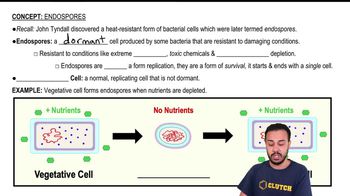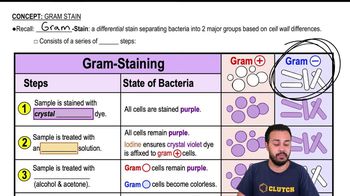Fill in the following blanks.
a. 1 μm = ______ m
b. 1= _______ 10⁻⁹ m
c. 1 μm = ______ nm
 Verified step by step guidance
Verified step by step guidance



Fill in the following blanks.
a. 1 μm = ______ m
b. 1= _______ 10⁻⁹ m
c. 1 μm = ______ nm
Which of the following is not a modification of a compound light microscope?
a. brightfield microscopy
b. darkfield microscopy
c. electron microscopy
d. phase-contrast microscopy
e. fluorescence microscopy
Which type of microscope would be best to use to observe each of the following?
a. a stained bacterial smear
b. unstained bacterial cells: the cells are small, and no detail is needed
c. unstained live tissue when it is desirable to see some intracellular detail
d. a sample that emits light when illuminated with ultraviolet light
e. intracellular detail of a cell that is 1μm long
f. unstained live cells in which intracellular structures are shown in color
Three-dimensional images of live cells can be produced with
a. darkfield microscopy.
b. fluorescence microscopy.
c. transmission electron microscopy.
d. confocal microscopy.
e. phase-contrast microscopy.